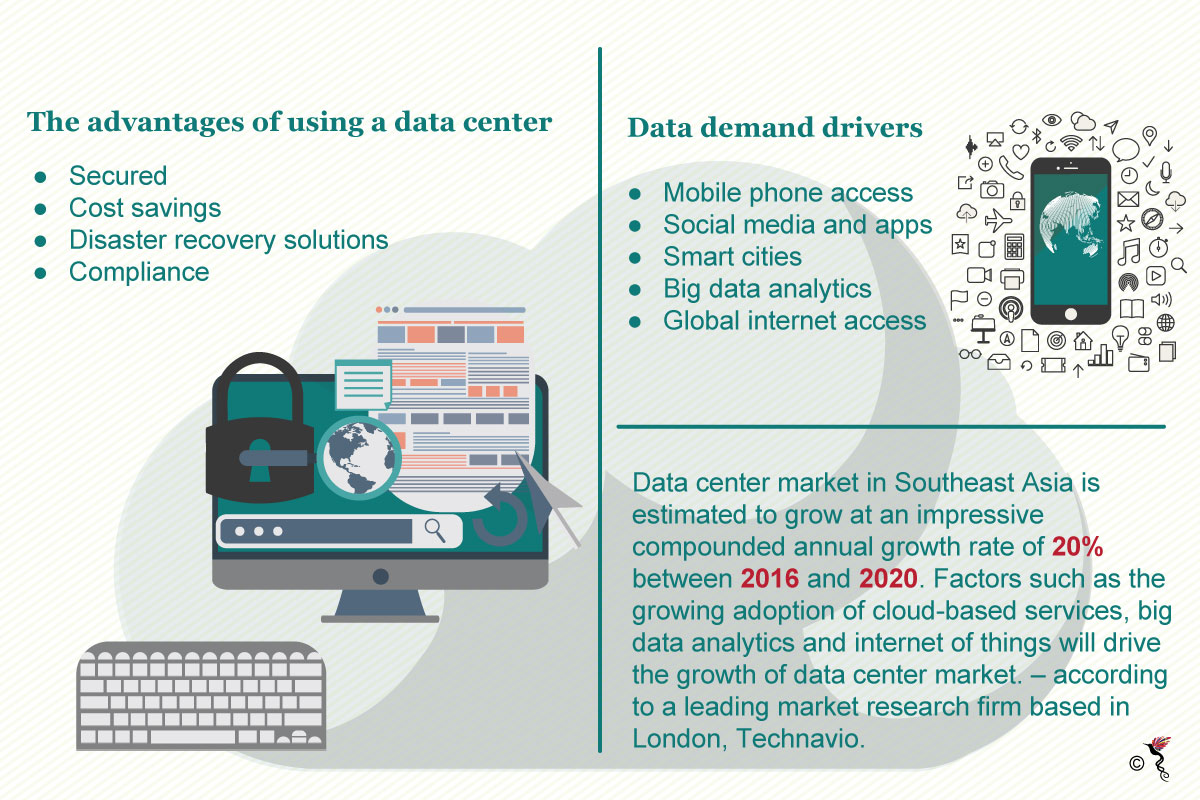The data centre landscape in Southeast Asia is poised to expand, driven by new developments, innovation and rapid growth in the digital economies within the region. The demand for data centres in the region is expected to increase due to the increase in the use of mobile phones, internet access, smart cities, big data analytics and social media applications. Most of the economies in the region – namely Singapore, Malaysia, Indonesia and Thailand – are investing in data centre infrastructures in their respective countries. Singapore is one of the leading countries in the region for building data centres, followed closely by Malaysia, Indonesia and Thailand.
Growth potential of data centres in ASEAN
ASEAN (Association of Southeast Asian Nations), which is home to more than 600 million people, foresees demand for data centre services in the region to continue to grow as there is a need for additional capacity in the coming years. The demand is equally driven by the growing young population in ASEAN where over 70 percent of the total population is aged 34 and below. Other factors that will boost the demand for data centre services in the region are due to rising utilisation in local data, smartphone usages, social media and mobile applications among the younger population. This includes the growing need to outsource data centres and government initiatives to prioritise IT (information technology) industries and digitalisation.
Frost & Sullivan, in a press release, stated that data centres in the region are at the forefront of adopting critical power infrastructure services in order to build a redundant power infrastructure. Data centre services such as power quality audits as well as installation and commissioning currently account for a sizeable proportion of the market revenues for three-phase UPS (uninterruptible power supply) systems.
“With the data centre and telecom sectors in the ASEAN region adopting new technologies that include cloud computing, server virtualisation, modularity, long-term evolution, and voice-over-Internet protocol, integrated infrastructure services are in high demand,” it stated. “As data centres are increasingly using scalable and modular power solutions, the periodic involvement of technicians and service personnel to upgrade power supply capacity across the network will be particularly required.” Original equipment manufacturers of critical power infrastructure will have an edge over other service providers in the ASEAN region as customers prefer to associate with them for all post-delivery needs.

Growth potential of data centres.
Importance of Data Centres
As technologies become more advanced, the growing dependence on data centres offers consumers greater levels of security, flexibility and accessibility to data and information. In light of this, data centres in Southeast Asia are expected to continue its growth momentum in the coming years. The advantages of engaging a data centre include reduced infrastructure costs, uninterrupted power supply, added data security and safety, increased storage and multiple IP providers.
